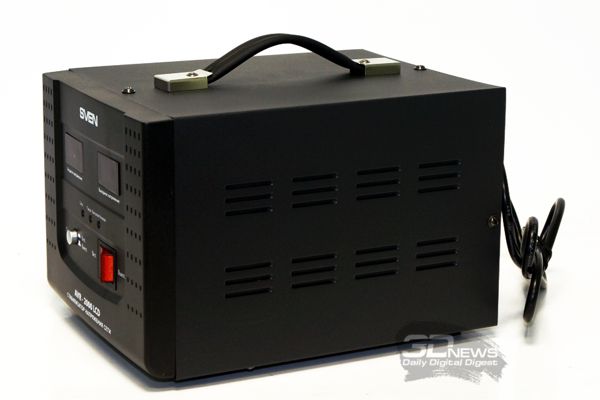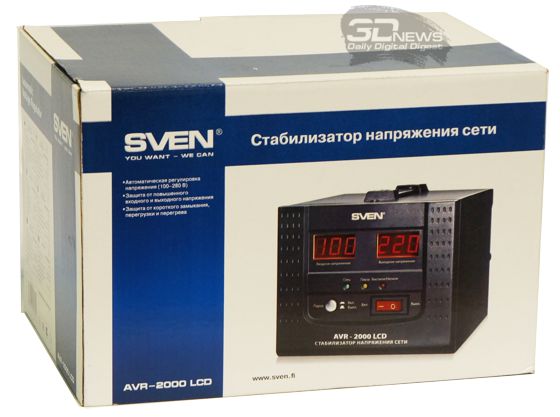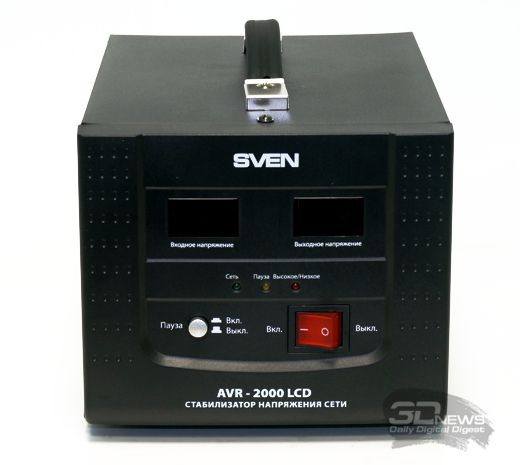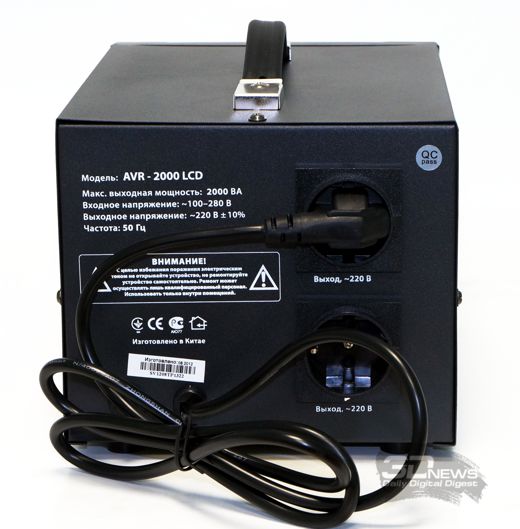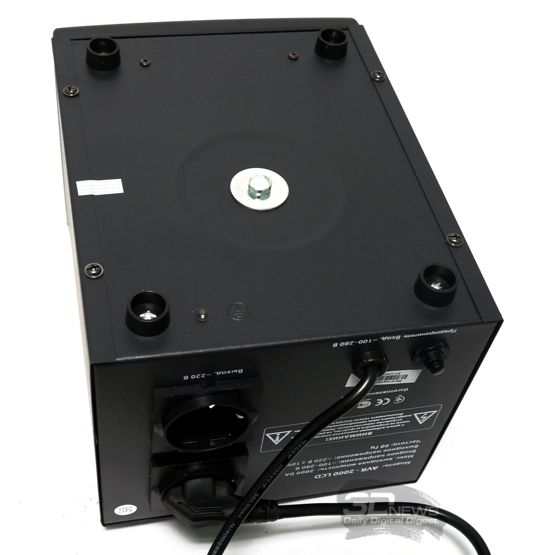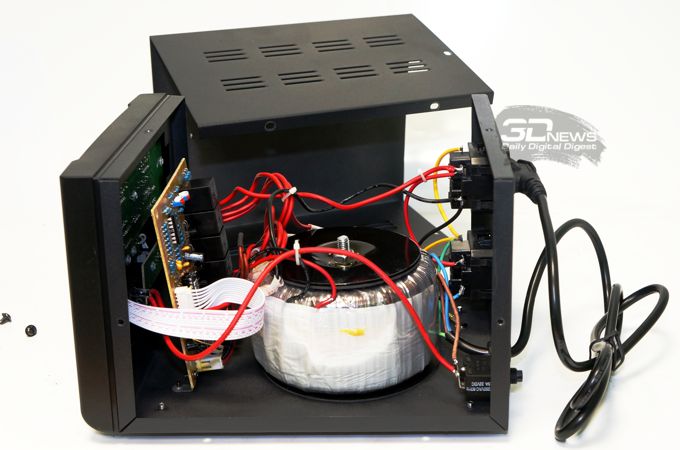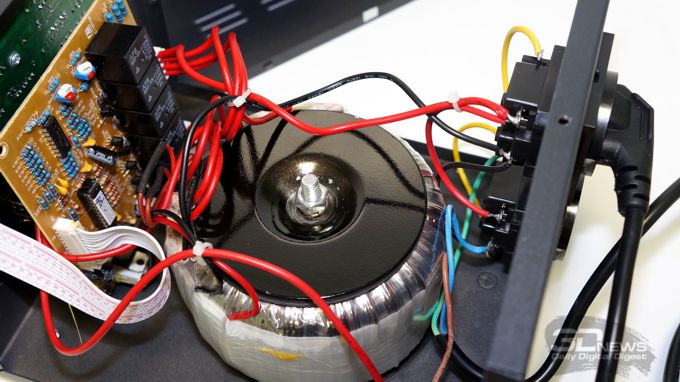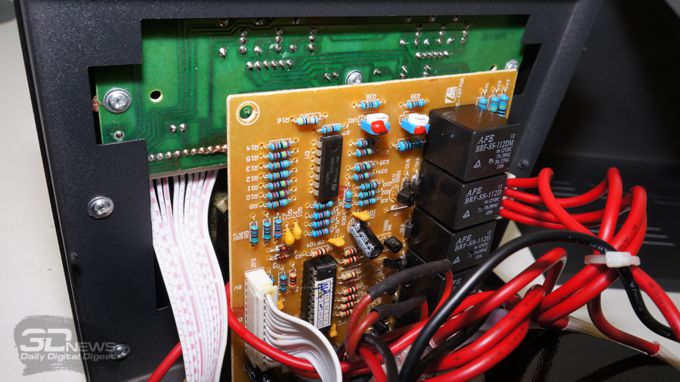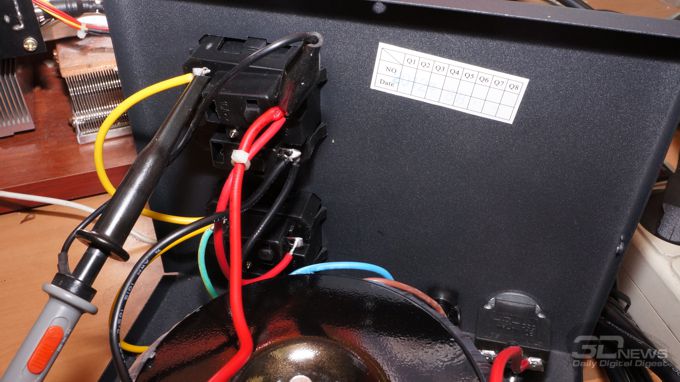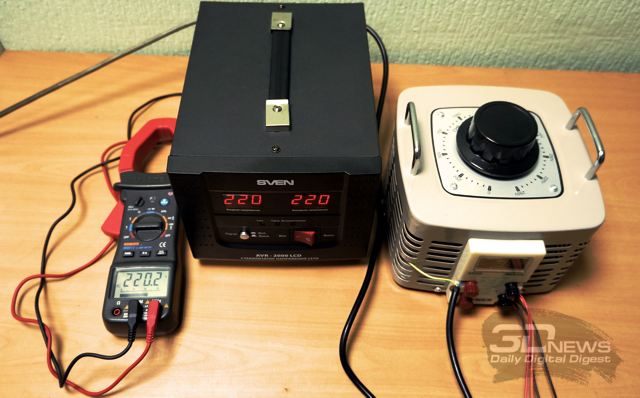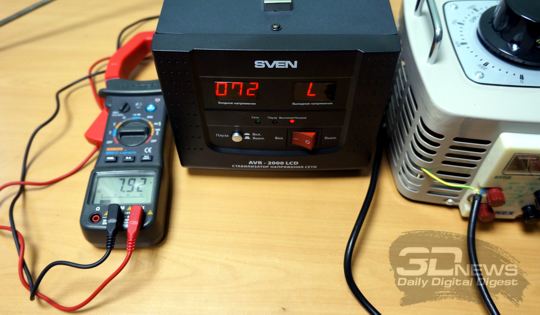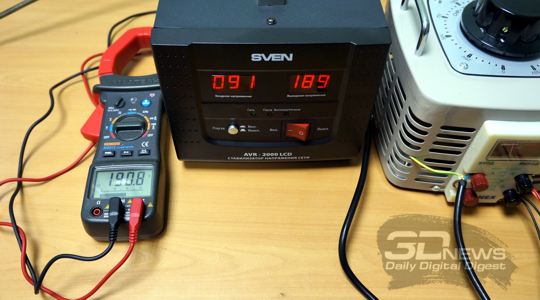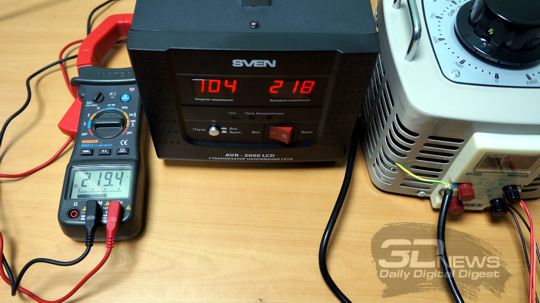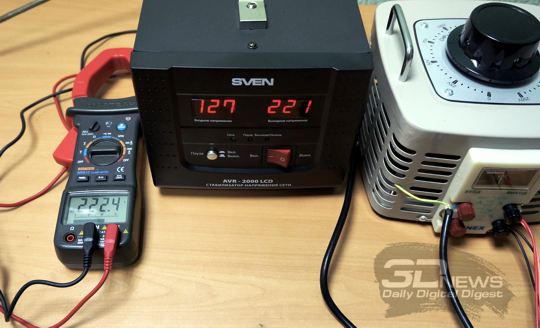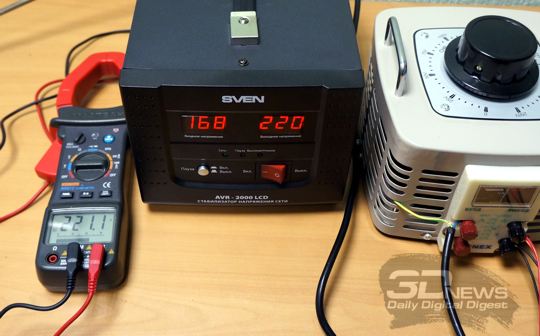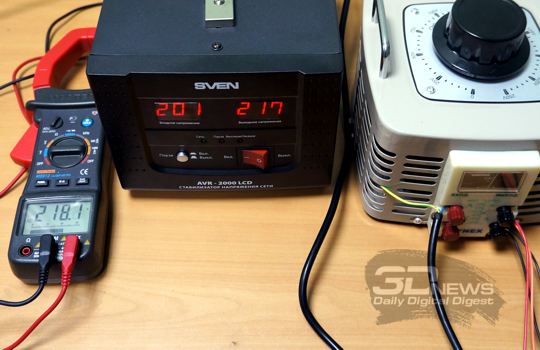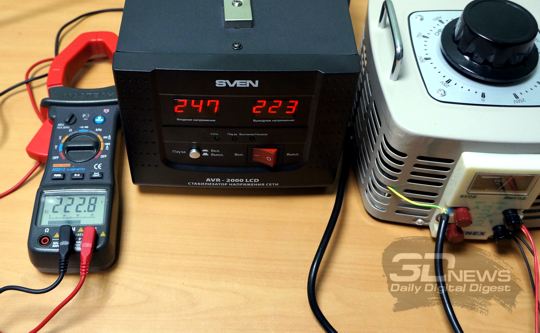Power automatic voltage regulators are not constant guests in 3DNews editorial office, but just that fact became one of reasons for more thorough attitude to the test process of a novelty AVR-2000 LCD from SVEN Finnish Company. It must be noted that for a long time this producer’s product line comprises the great number of versions of regulators with different load characteristics. The abbreviation LCD in the model name means the presence of a digital multisegmental level indicator of input and output voltages, but at retail you can find another version – with classic “pointers”. The AVR series comprises models with indexes from 500 to 5000; in practice it means the maximum sustained power from 400 W to 4 kW.
As a matter of fact, such a regulator is a device designed to remove input power voltage distortions, as well as to provide line supply in conditions of stable undervoltage or overvoltage. In recent years, this problem is not so strongly pronounced in metropolises as before, but anywhere where we have to do with transformer substations with insufficient precise control, especially in the country, such a device will be quite urgent and more than in demand.
A key feature of SVEN AVR-2000 LCD regulator is a very wide range of input voltages, wide even for our harsh reality: 100-280V AC. Moreover, as it is declared in specifications, the output voltage must be stable 220V with acceptable deviations.
It is needless to say that the short-circuit protection is provided for the regulator, as well as the protection against overload, overvoltage and undervoltage. It has even thermal overload protection of its transformer. In addition, there is one more interesting advantage: the “Pause” button – for 6 or 180 seconds – which within this time allows connecting live load to the network without a risk of its damage at the moment of power supply resumption. Such delay during load connection to the network protects the device from impacts of peaks of transient processes (for example, discharge of condensers) in case of short-time power failure.
Let’s proceed to examination of possibilities of SVEN AVR-2000 LCD in practice.
Packaging arrangement, construction
The visual informative package gives exhaustive idea about its content – well, may be except for the weight, which is deliberately meant considerable for such types of devices. The device picture, its name and key characteristics are printed on the box.
The regulator is carefully packed with foam plastic. The device has an easy-to-use carrying handle, the more so because it will to be used in the most unpredictable places – in a garage, workshop, somewhere on the service floor of a house, in a boiler room, etc. The package of SVEN AVR-2000 LCD regulator includes, besides the proper device, Operation Manual and warranty card.
Two three-digit seven-segment LED displays are arranged on the front panel of the device, which are responsible for the information display about the current input and output voltages, the time to turn-on delay finishing, a protection mode against overvoltage («H» on the right LED) and undervoltage («L» on the left LED), thermal protection triggering (blinking «t» symbol). In addition, there are three LED indicators displaying the power network status and input voltage character, i.e. overvoltage or undervoltage, on the front panel, as well as the abovementioned “Pause” button and the main on-off switch.
There is the integrated power cable, as well as two standard “euro” type power sockets and a fuse on the rear panel. In outward appearance, everything is arranged logically and simply, the case is covered with special industrial black enamel with distinctive mat roughness to prevent against superfluous dirtying.
There are no surprises at the bottom as well: compact practical legs, in the center – a bolt of great size, which undoubtedly fastens a powerful toroidal transformer, as in that famous well-worn story about the nut in navel. Just the right time to take off the case and check our guesses.
Such is indeed the case: there is an old good toroidal transformer, which makes the main weight of the device and plays a key role in this case to form stable output voltage with HF-transduction.
The device is rated in the autotransformer transducer class with stepped voltage control by means of switching of power autotransformer taps with power relays. It is possible to find a traditional transformer assembled of E-shaped plates in the classic design style of similar devices. A toroidal transformer is comparative rareness and pleasant surprise.
The system is assembled on two printed circuit boards, one of which additionally serves as a supporting bracket for input and output voltage LED indicators on the front panel, the second one is actually all the transformers, commutation and automation.
It should be also mentioned about the availability of five BRF-SS-112DM electromagnetic regulating elements with the following main characteristics: maximum permissible voltage 250V, maximum permissible current 20A, maximum safe load 4250 V*A, response time not more than 10 ms.
However the main circuit element is a digital processor, which provides the wide range of functional possibilities including precise measurement and display of input and output voltages, timers, correct and exact switching during transition from one stage to another, high and low voltage control, etc.
Wiring and soldering are performed at a deserving level, power wires and cables have quite thick cross-sections for a device of this class, all loops and hook-up wiring elements are fixed and soldered properly.
Testing and conclusions
A classic laboratory autotransformer (LАТR) with output voltage control of alternating current in the range 0-250V, therewith with deliberately sufficient power – 2 kV*А, was used for testing of such a specific device as SVEN AVR-2000 LCD automatic voltage regulator, especially with so wide declared range of input power voltages. Loads for this system were chosen different: first it was a trivial electrical oil radiator, then, when the fear to burn something passed, a powerful desktop computer and a notebook of DTR type with permanent power supply were put to use.
Moreover, to be on the safe side, indicator readings of SVEN AVR-2000 LCD regulator were duplicated with the use of Mastech M9912 test laboratory pliers – they were chosen as the most exact laboratory device with minimum delays and maximum reliable displaying alternating current values with amplitude of hundreds of volt. The test indicator of voltage and power of ETech PM300, which we commonly use to take characteristics of power supply units for the subsequent construction of graph of the coefficient of efficiency, fell away as less reliable and sluggish, by the way.
For greater illustration purposes, we demonstrate results in photos, where you can see LATR settings, the readings of input and output voltages according to the version of digital indicators of SVEN AVR-2000 LCD regulator, as well as of the measuring pliers.
Several relevant comments to the illustrations. The regulator “revives” when the input voltage level is approximately 68-70 V. The Latin letter «L» on the LED indicator means exactly the message that the input voltage is barely sufficient to start the regulator.
The start of the transformation operation mode takes place long before 100 V promised in passport characteristics. The regulator starts to provide about 190-200 V. Near to the control level – 100V input voltage – this parameter reaches the calculation level exactly.
It was interesting to see, how the regulator operated at 127 V input power voltage. After all, it was our ancient nostalgic standard of power networks. It would be interesting to know is it used today at least anywhere except for the Moscow Metro?
Operating voltage exceeding up to 250V permissible by our LATR did not bring any surprises as well, the deviation from the nominal did not exceed 2-4V.
During the process of passing the scale of operating voltages there was a row of iterations of adjustment of the transducer operation mode of the regulator, which was clearly heard by a distinctive click of the next relay. During the next transition the output voltage slightly deviated from the standard 220 V, but every time within reasonable limits of several volts. We would remind you that according to the passport data of SVEN AVR-2000 LCD regulator, the permissible deviation is up to 8 percent to the side of increasing or decreasing. This is equal to 17.6 V, as our calculator prompts, i.e. the range from 202.4 to 237.6 V. In any input voltage modes the regulator did not reach those limits at all, the maximum deviation observed was equal to 4 V downward and 8 V upwards.
By short, you can see the result yourself. SVEN AVR-2000 LCD coped with the tasks assigned to it in full, even the indication accuracy of input and output voltages did never deviate more than one and a half volts.
An input power voltage regulator is a really specific device needed on certain conditions. The spectrum of its functions comprises the voltage filtration against off-side interferences, as well as the protection of household appliances against a sudden short-time power failure. In general the regulator is not needed to everybody. However, if you have to choose, then with such a device as SVEN AVR-2000 LCD, to all appearances, you will have to do with.

